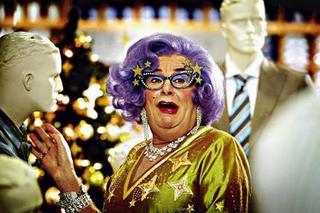
Australia’s Oroton Group as Australia's only luxury clothing and accesories group, used to be a bellwhether for contemporary Australian luxury but not any more.
At the turn of the century, the company began an aggressive acquisition program that saw it acquire the Morrissey and Marcs brands. At one stage both of these brands were originally positioned at the higher end of the Australian fashion market, Marcs used to import leading European designer brands and Peter Morrissey, alongside long-time partner Leona Edminston, used to sell into New York department stores. Since 2003 the group has shown static growth, with both the Marcs and Morrissey brands subject to constant revision and somewhat arbitary repositioning. We think we might have some idea why the Oroton Group might be getting it wrong.
This is Oroton’s customer segmentation model from a recent presentation:
Oroton
Contemporary consumers who spoil themselves and others through quality purchases
Polo Ralph Lauren
Quintessential classic contemporary shopper
Polo Jeans
Classic youth minded shopper
Marcs
Contemporary consumers who seek quality fashion
BabyDoll
Fashion driven youth-oriented shopper “Gotta have it now”
Morrissey
Sophisticated consumers who value individuality
Aldo
Fashion aware, on-brand shoppers who place price and quality as paramount
The interesting thing about what these descriptors reveal is how little Oroton seem to know about their customers, interchanging the word “shopper”, “consumer” and “individual”, without really attaching any single unique detail or benefit to purchase. Instead, they use ambiguous outcomes like “quality”, “ value individuality” and “contemporary” in a naive attempt to segment their customers. All seemingly simplistic, almost as if they are frightened to actually say who their customers are. More importantly, we believe the poor performance of some of these brands can be attributed, not to a flat trading environment which the group cites, but to their failure to actually understand and get inside the minds of their customers.
One of the opportunities we see for Oroton is the adoption of a more benefit-based market segmentation approach for their portfolio. This involves segmenting the market for their products across all the brands and introducing a brand lifecycle based on the intrinsic value that their customers get from their products, not by traditional conjoint analysis, which identifies customers on variables such as how much money she makes or where he lives. This intrinsic value (benefit) could take various forms such as the snob appeal of Polo, the perceived quality of Oroton or the derived economy in an Aldo shoe customer.
This method of market segmentation is significantly different from other methods of market segmentation in use. It gets inside the consumer’s thinking and finds out what the customer feels about a product or brand. The underlying principle is that consumers do not seek a product or brand, rather they seek alignment with a brand essence - they want what it does for them, or the derived benefit – how it makes them feel, look and the status they get from the purchase. With benefit-based segmentation, the objective is to identify why the customer is buying the product, and group customers accordingly.
Oroton Group currently seems to see the outward benefit of segmentation as a way to market to customers within the brand portfolio rather than across it. However, using a benefit-based market segmentation model, the objective is to group customers together for the most effective targeting, not separate them out to be targeted separately. Something that fits with the Group’s recent stated goal to adopt a “whole of company” approach to their brands.

